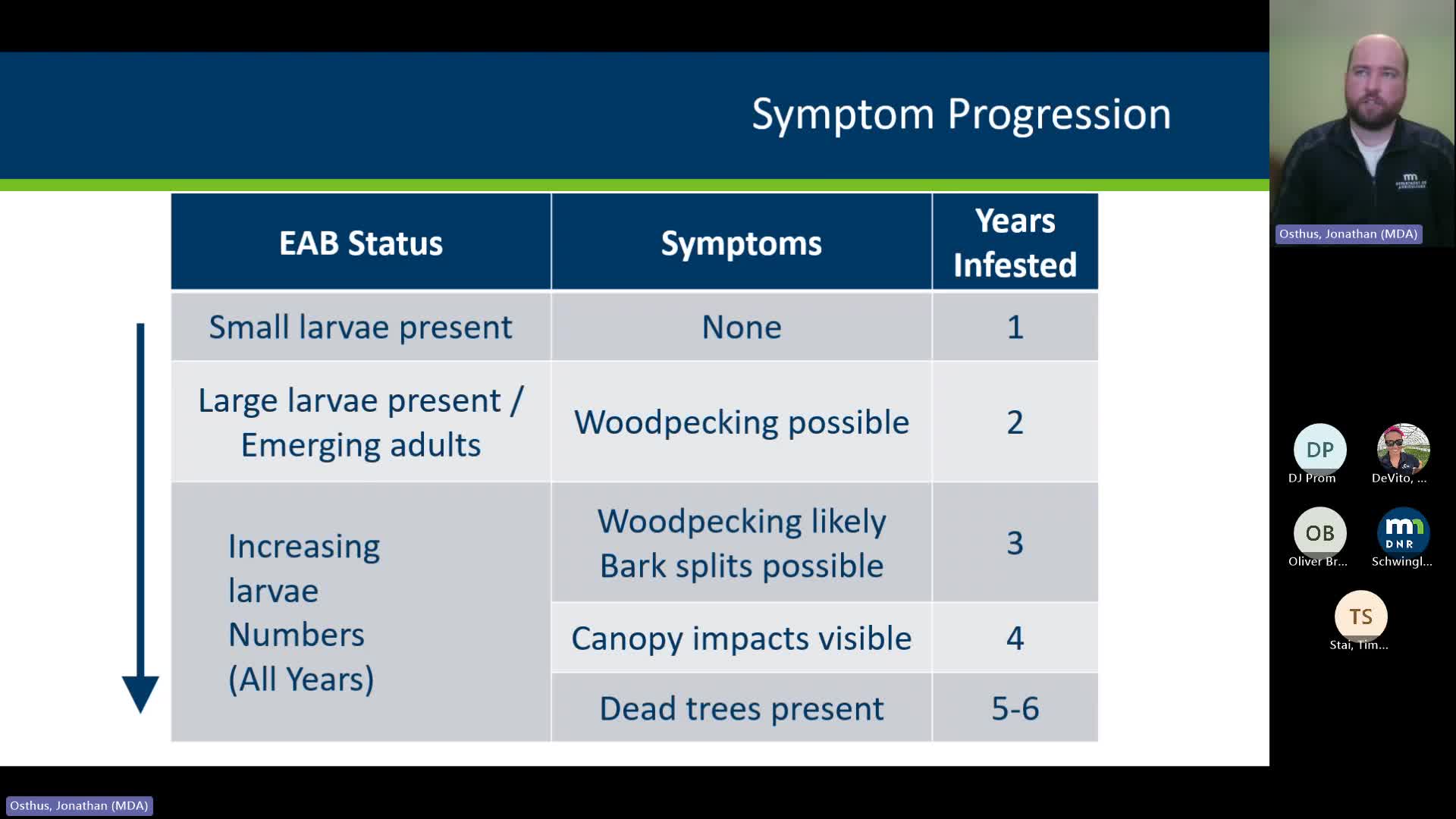Emerald Ash Borer Infestation Takes Five to Six Years to Kill Trees
December 13, 2023 | Agriculture, Department of , Agencies, Boards, & Commissions, Executive, Minnesota

This article was created by AI summarizing key points discussed. AI makes mistakes, so for full details and context, please refer to the video of the full meeting. Please report any errors so we can fix them. Report an error »

The Emerald Ash Borer (EAB) infestation poses a significant threat to ash trees, with experts outlining a timeline of tree decline during a recent informational meeting in Morrison County. The discussion highlighted that it typically takes about five to six years from the initial infestation for an ash tree to die, making early detection crucial for homeowners.
In the first year of infestation, trees show no visible signs of EAB presence. By the second year, woodpeckers may begin to peck at the tree, indicating the presence of larvae. Observers are encouraged to inspect trees during winter when leaves are off, using binoculars to spot potential damage. By the third year, signs such as woodpecker damage and S-shaped galleries may become visible, although the average person might not notice significant issues yet.
The fourth year marks a turning point, as major canopy impacts become apparent, prompting homeowners to recognize that something is wrong. By years five and six, the tree is typically dying, and the risk of hazards increases, especially for trees located near homes or other structures. Experts warn that dead trees can become dangerous quickly, necessitating prompt action to avoid costly removal.
Homeowners are advised to consider insecticide treatments if they detect EAB in the early stages, particularly during years two or three when the tree's canopy remains relatively healthy. This proactive approach can help protect the tree from further infestation and prolong its life.
The meeting underscored the importance of vigilance and timely intervention to manage the threat of the Emerald Ash Borer effectively.
In the first year of infestation, trees show no visible signs of EAB presence. By the second year, woodpeckers may begin to peck at the tree, indicating the presence of larvae. Observers are encouraged to inspect trees during winter when leaves are off, using binoculars to spot potential damage. By the third year, signs such as woodpecker damage and S-shaped galleries may become visible, although the average person might not notice significant issues yet.
The fourth year marks a turning point, as major canopy impacts become apparent, prompting homeowners to recognize that something is wrong. By years five and six, the tree is typically dying, and the risk of hazards increases, especially for trees located near homes or other structures. Experts warn that dead trees can become dangerous quickly, necessitating prompt action to avoid costly removal.
Homeowners are advised to consider insecticide treatments if they detect EAB in the early stages, particularly during years two or three when the tree's canopy remains relatively healthy. This proactive approach can help protect the tree from further infestation and prolong its life.
The meeting underscored the importance of vigilance and timely intervention to manage the threat of the Emerald Ash Borer effectively.
View full meeting
This article is based on a recent meeting—watch the full video and explore the complete transcript for deeper insights into the discussion.
View full meeting
